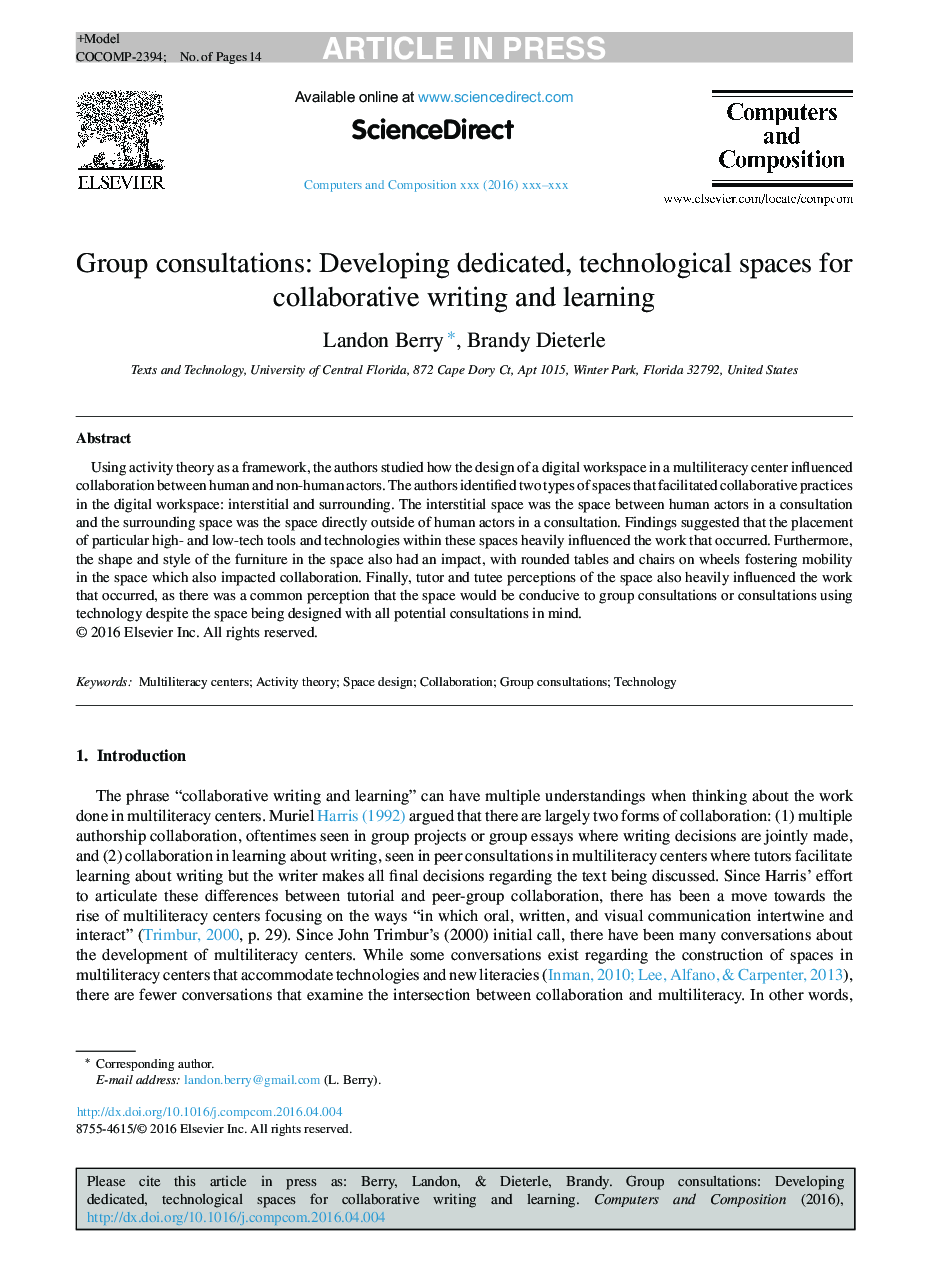| Article ID | Journal | Published Year | Pages | File Type |
|---|---|---|---|---|
| 4936721 | Computers and Composition | 2016 | 14 Pages |
Abstract
Using activity theory as a framework, the authors studied how the design of a digital workspace in a multiliteracy center influenced collaboration between human and non-human actors. The authors identified two types of spaces that facilitated collaborative practices in the digital workspace: interstitial and surrounding. The interstitial space was the space between human actors in a consultation and the surrounding space was the space directly outside of human actors in a consultation. Findings suggested that the placement of particular high- and low-tech tools and technologies within these spaces heavily influenced the work that occurred. Furthermore, the shape and style of the furniture in the space also had an impact, with rounded tables and chairs on wheels fostering mobility in the space which also impacted collaboration. Finally, tutor and tutee perceptions of the space also heavily influenced the work that occurred, as there was a common perception that the space would be conducive to group consultations or consultations using technology despite the space being designed with all potential consultations in mind.
Related Topics
Social Sciences and Humanities
Arts and Humanities
Language and Linguistics
Authors
Landon Berry, Brandy Dieterle,
